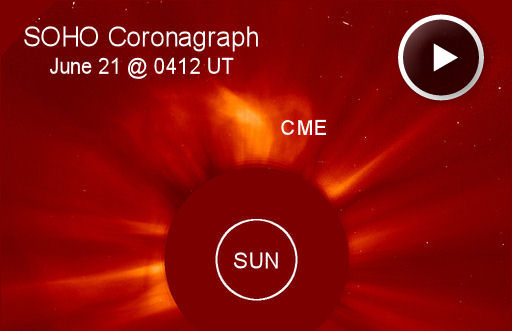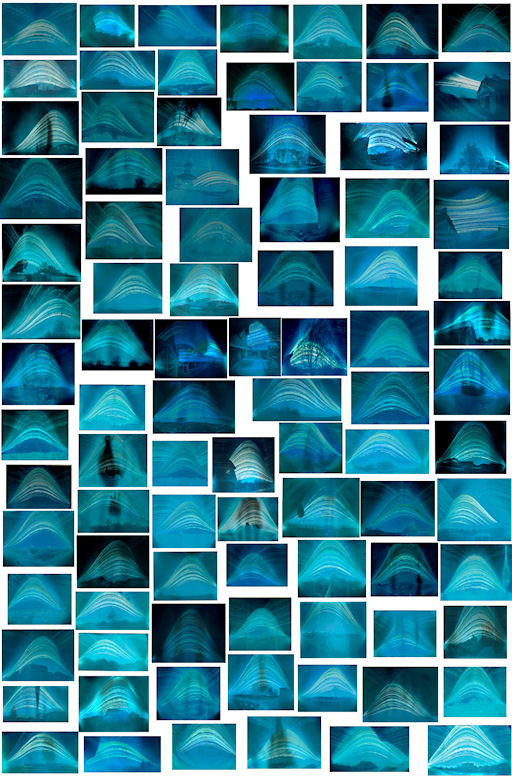Turn your cell phone into a field-tested satellite tracker. Works for Android and iPhone. | | |
CHANGE OF SEASONS: Today marks the beginning of northern summer. The change of seasons occurs on June 21st at precisely 17:16 UT (1:16 p.m. EDT) when the sun reaches its highest point on the celestial sphere. Because Earth's seasons are reversed in the two hemispheres, today is also the beginning of southern winter. Happy Solstice!
INCOMING: Magnetic fields above sunspot complex 1236 erupted during the early hours of June 21st, producing a C7-class solar flare and a full-halo CME. The expanding cloud is heading almost directly toward Earth:

UPDATE: According to analysts at the GSFC Space Weather Lab, the CME left the sun traveling 800 km/s and it will reach Earth on June 23rd at 23:22 UT (plus or minus 7 hours). A very cool 3D heliospheric model shows the cloud sweeping past our planet. The impact is expected to trigger a G2-class (Kp=6) geomagnetic storm.
High-latitude sky watchers should be alert for auroras on June 23rd and 24. The season favors southern hemisphere observers, where solstice skies are winter-dark. Aurora alerts: text, voice.
June 2011 Aurora Gallery
[Aurora alerts: text, voice] [previous Junes: 2010, 2008, 2001]
SOLSTICE SOLARGRAPHS: Last December, the staff of the Philippus Lansbergen Observatory in Middelburg, the Netherlands, invited members of the general public to join them for a solargraph-making party. A solargraph is a simple pinhole camera made from a soda or beer can lined with a piece of photographic paper. About a 100 cans were deployed around the observatory and, six months later, here are the results:

Each blue square shows the daily path of the sun across the skies of the Netherlands. The lowest arcs were traced by the winter sun of Dec. 2010. The highest arc was made by the sun just yesterday, June 19th, only two days before the 2011 summer solstice. Occasional gaps are caused by clouds.
"As you can see," says a member of the observatory staff, "we had one of the sunniest springs ever in our province. It was even sunnier than in southern Spain!"
6-month Solargraph How-to Guides: #1, #2, #3
June 15th Lunar Eclipse Gallery
Midnight Solar Eclipse Gallery
[NASA: A Rare Eclipse of the Midnight Sun]
Potentially Hazardous Asteroids (
PHAs) are space rocks larger than approximately 100m that can come closer to Earth than 0.05 AU. None of the known PHAs is on a collision course with our planet, although astronomers are finding
new ones all the time.
On June 21, 2011 there were 1224 potentially hazardous asteroids.
Notes: LD means "Lunar Distance." 1 LD = 384,401 km, the distance between Earth and the Moon. 1 LD also equals 0.00256 AU. MAG is the visual magnitude of the asteroid on the date of closest approach. | | The official U.S. government space weather bureau |
| | The first place to look for information about sundogs, pillars, rainbows and related phenomena. |
| | Researchers call it a "Hubble for the sun." SDO is the most advanced solar observatory ever. |
| | 3D views of the sun from NASA's Solar and Terrestrial Relations Observatory |
| | Realtime and archival images of the Sun from SOHO. |
| | from the NOAA Space Environment Center |
| | the underlying science of space weather |
| | for out-of-this-world printing and graphics |

